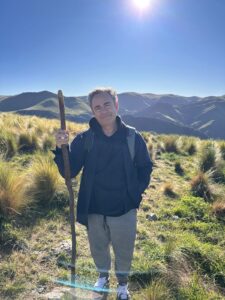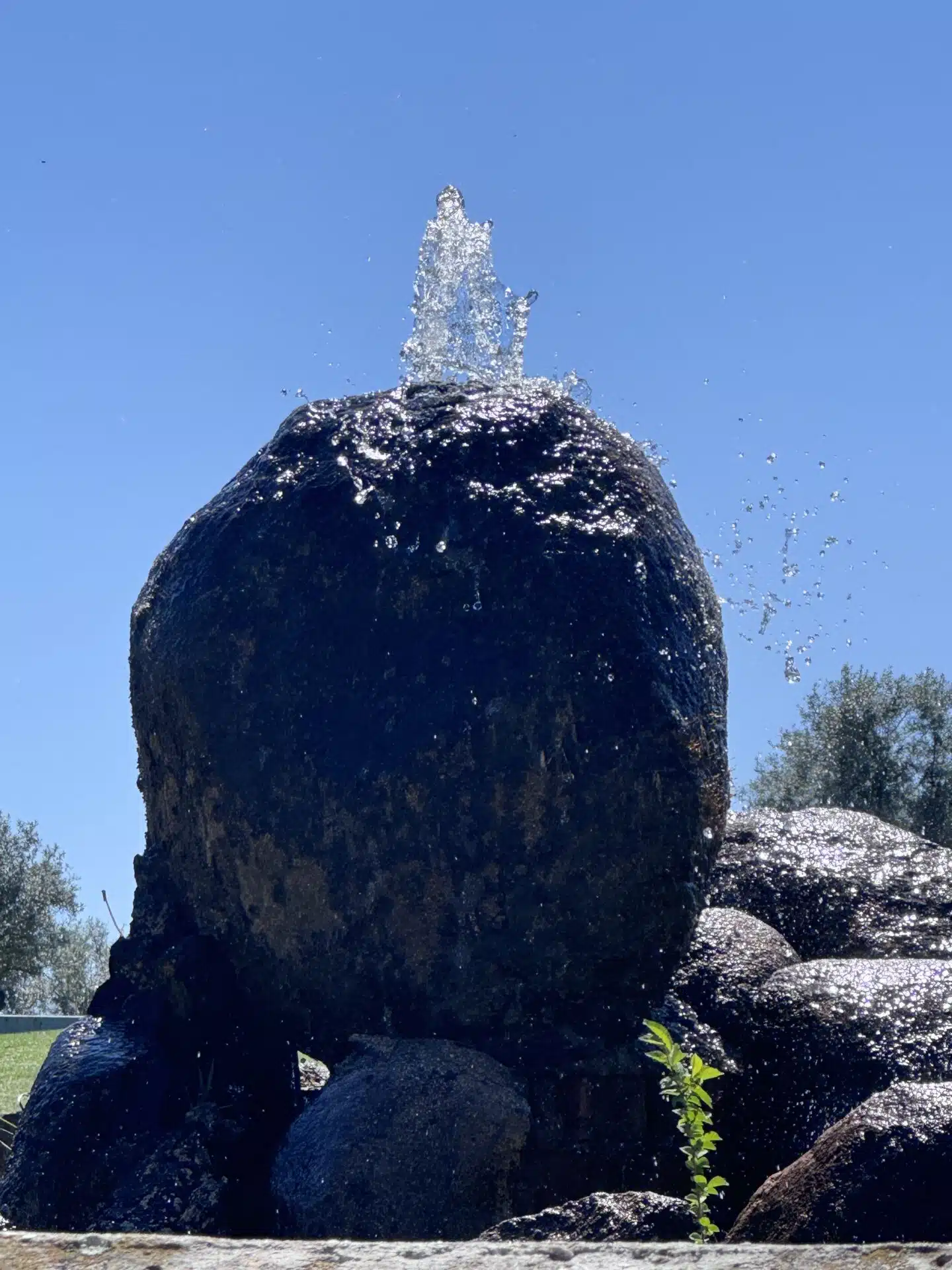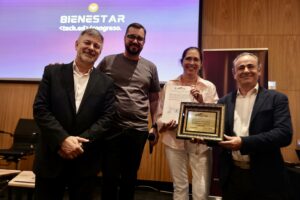
Interweaving Spiritual Wisdom: Brahma Kumaris, Newton, Aurobindo, Meher Baba, Hawkins, Buddhism, and Taoism
The Nature of the Soul and the Divine Self At

Time surrounds us like air – we breathe it, live by it, yet its nature remains a profound mystery. In daily life we feel time’s steady arrow: one moment follows another, childhood gives way to maturity, and someday death comes. Yet both modern physics and ancient wisdom suggest this sense of flowing time might be more a feature of consciousness than of ultimate reality. As a hypnotherapist, I’ve witnessed clients journey beyond ordinary chronology – recalling past lives, the space between lives, and even prenatal memories – which invites us to ask: What is time? Reflecting on this question can be transformative. It shifts healing from a linear fix of past traumas to an awareness of an eternal unfolding in which we are students of a vast, multi-dimensional curriculum. This integration of science, spirituality, and soul work opens a contemplative path toward deeper healing and self-understanding.
Modern science increasingly points to time as a more fluid construct than our everyday experience suggests. Einstein’s relativity teaches there is no single “now” that everyone shares. In relativity, past, present and future all coexist in a four-dimensional space-time. This so-called block universe means every event – from dinosaurs roaming Earth to your future children’s births – has a fixed “coordinate” in space-time. In that view, time does not “flow” so much as our consciousness moves through an unchanging whole. Philosopher Huw Price puts it this way: “What physics gives us… is the so-called ‘block universe,’ where time is just part of a four-dimensional space-time”. In other words, time might be an emergent feature of our perspective, not a fundamental river dragging reality along.
Physicist Max Tegmark likens life to a movie on a DVD: the entire story (all frames) is recorded, but we only experience one frame at a time. He says: “We have the illusion, at any given moment, that the past already happened and the future doesn’t yet exist… all I’m ever aware of is my brain state right now. The only reason I feel like I have a past is that my brain contains memories.”. In this picture, nothing “on the DVD” (the block universe) actually changes – the drama is already there, yet to us it feels alive and unfolding. Neuroscience echoes this: our perception of time is constructed by the brain. Different neural circuits track the present moment and weave together memories of the past. For example, researchers have found “time cells” in the hippocampus that bind events into a temporal sequence. The hippocampus essentially time-stamps our memories, giving us a sense of chronological order. Likewise, attention and neural rhythms in the cortex make some moments feel longer or shorter. In short, our brains build time from signals – without these mental processes, “past” and “future” dissolve.
Even at the quantum level, time loses its grip as an absolute. In some descriptions, antimatter particles behave like particles moving backward in time – as Feynman noted, a positron can be seen as an electron traveling in reverse. And physicists observe that at deep levels there’s no “universal past” or “future” – only relations between events. As one account summarizes Einstein: “There is no universal ‘now’, no universal ‘past’, and no universal ‘future’.”. In these views, what we feel as time’s passage may be a feature of our limited perspective, like watching a play from a single seat in the theater.
Taken together, science suggests time is non-linear and even optional – a coordinate we use to order experiences rather than an unchanging backdrop. Space, time and matter form a block that “just is,” and our consciousness picks out a “here and now” slice. This challenges the notion that time is fixed or flowing; instead it implies time could be a dimension of consciousness itself.
To our minds, the present moment feels vivid and real – but this “now” is partly an illusion shaped by memory and perception. As Tegmark’s analogy implies, our sense of having a past is only because our brains hold memories. Without memory we wouldn’t recognize a sequence of events; past and future would merge into a seamless eternity. Neuroscience shows that when we experience something, the brain automatically records time-stamps so we can later recall “before” and “after.” For instance, neurons in the hippocampus activate in patterns that encode when an event happened, not just where or what. The parietal cortex helps gauge the length of seconds, while the hippocampus links experiences into a timeline.
Because of this, if our memory circuits focus on one moment, other moments fade – an hour at work may “fly by” unnoticed, while a minute in suspense seems endless. This subjective elasticity of time shows it is not a uniform flow but a mental narrative. As a hypnotherapist, I’ve seen this phenomenon: under deep relaxation or altered awareness, time often dilates or contracts. A single regression session might feel like hours or minutes, and people recall lifetimes in a whisper. This indicates that psychology and consciousness shape time. Our habitual sense of linear time can unbind under altered states, hinting at deeper layers where time is malleable.
In meditation and deep introspection, too, the notion of time can dissolve. Mystics have long noted that in profound awareness only the eternal “now” exists. The past is held in memory, the future in imagination, but true experience is always the present. When that boundary between moments blurs, one glimpses how time may not be an external chain but an inner construct. This bridge between neuroscience and spirituality suggests that the soul’s journey – and our healing – is not confined to the clock’s ticking, but is woven through all our moments, in memory and beyond.
Ancient wisdom also treats time as multidimensional and cyclical rather than linear. In Hinduism, time is often depicted as a wheel (saṃsāra) through which the eternal soul (ātman) travels. Sacred texts like the Bhagavad-Gītā and Upanishads describe the soul as immortal, “cycling through various lifetimes in different bodies” until final liberation (moksha). Each life’s actions (karma) leave impressions that shape future births. As one source notes, “the soul moves on, carrying with it the accumulated karma of that life, which influences the circumstances of its next birth”. In other words, time is a spiral of cause and effect: lessons unfinished in one life continue in another. This view means your soul’s narrative spans eons, so what seems like a “past” memory today might be an ancient thread in the soul’s tapestry.
Buddhism echoes this cyclical view and adds the insight of impermanence (anicca). The Buddha taught that all phenomena, including selves and worlds, are ever-changing and lack an inherent essence. In one discourse he even emphasizes that the beginning and end of existence are “incalculable” – they have no first or last point. Buddhist cosmology speaks of countless world-cycles, each with birth and destruction, ad infinitum. Therefore, notions of a single starting point or a finite timeline are regarded as conceptual constructs of the mind. One of my Buddhist teachers explains that existence is “largely non-historical” – everything is cyclic and, in a way, timeless. The idea of a singular timeline or linear destiny is illusory. In meditation one experiences this directly: moments arise and dissolve in a flow with no inherent “time-stamp.”
Other sacred and esoteric traditions similarly locate time within consciousness. The notion of non-duality in Advaita Vedanta and Mahayana Buddhism suggests that ultimate reality transcends all dualities – including past/future. When one fully realizes non-duality, the whole play of time collapses into one infinite present. Likewise, in Theosophy and New Age circles, the Akashic Records are said to be a higher-dimensional repository of all events across time and space – a cosmic memory bank accessible through higher consciousness. In regression work this idea surfaces frequently. As one practitioner notes, therapists who tap into the superconscious can view the Akashic records as a “chart of all of our past and future lives”. In that view, all of time exists in a library of the soul; by shifting awareness we can retrieve knowledge from any page of history.
Even Buddhism’s focus on the present moment carries this transcendent hint: the past and future are seen as mental projections. What is real is this very instant, arising and passing. In practice, deep mindfulness reveals that “now” contains all – for the present moment includes the seed of the next moment, and memory is ever-present in awareness. Thus the revered Dharma encourages letting go of attachment to past and future. By embracing impermanence, one lives beyond time’s tyranny. All these traditions converge in a poetic truth: time is not a prison but a dimension of consciousness, a dance of change rather than a straight line of fate.
In hypnotherapy and spiritual regression, the above themes come alive in personal ways. In my own experience and the one of leading therapists like Brian Weiss, Michael Newton, Dolores Cannon, and Matthew Brownstein have guided thousands of clients to remember lives beyond this one. These case studies consistently portray souls operating across multiple lifetimes and realms. For instance, with Dr. Michael Newton’s “life-between-lives” protocols reveal that clients recall the space between incarnations: a soul council, guides, and prior planning of the current life’s lessons. In these sessions, time often appears as simultaneous or irrelevant – a soul recalls future events as easily as past ones, or sees them all at once in spirit. Dolores Cannon’s Quantum Healing Hypnosis Technique (QHHT) likewise uncovers so-called parallel lives. One famous Cannon quote (echoed by her students) is: “You are living many parallel lives simultaneously. You are not aware of it, you are just aware of this one (reality).” This encapsulates what many regression clients describe: a multidimensional existence where the soul learns in many threads at once.
Brian Weiss’s past-life therapy work shows how unhealed trauma and unfulfilled intentions from former lives can shape current phobias or relationships. During deep regression a single issue may unfold as a story from another era. But the narrative is rarely linear – clients may see events from different angles or times, realizing lessons were arranged by the soul group. Matthew Brownstein and others teach that what we call “healing” in regression is really remembering — recovering soul knowledge. Brownstein has spoken about our lives as a planned curriculum for the soul, where we learn, grow, and eventually release karmic patterns. In fact, this hypnotherapy training protocols advises therapists to study age, womb (prenatal), and past-life regression. This underscores that even pre-birth experiences – the birth trauma and the preconception state – are seen as part of our timeline. It’s as if our soul’s timeline starts before birth and extends beyond death in an eternal classroom.
What emerges from these regression practices is a paradigm shift: healing is not just fixing what happened earlier in this life. Rather, it is a continuum of learning. In a session, a client may “gain perspective” that a current habit was begun in the womb or among soul family in the spiritual realm. Past lives often carry forward ethical lessons or deep gifts, so that karma is not only pain but accumulated wisdom. This view reframes therapy: clients are not patients with a single-case history, but pilgrims in an immortal journey. Every symptom or memory can be seen as a classroom exercise given by the soul itself.
Thus, time in regression therapy is multilayered. We encounter linear time (childhood events, for example), but also radial time (past/future lives) and cyclical time (repeated themes across lives). When a client confronts a childhood fear, we may also explore its origin as a past-life memory, and even its soul-plan purpose between lives. In that way, healing is not seen as erasing a past hurt (a finite goal) but as part of an eternal unfolding of the soul’s story. Each life is a chapter, but the soul’s book has no final page.
When we ask “What is time?” as a spiritual question, we invite the ego-mind to relax its rigid timeline. Instead of seeing your healing as racing toward an endpoint, you begin to understand yourself as a being of light in experience. The very shift from linear to timeless perspective can release anxiety: problems become lessons unfolding in the tapestry of eternity. In practice, I encourage clients to reflect on these ideas and observe their own experience. For example:
These exercises are not about proving anything, but expanding awareness. Many find that as they ponder time, they touch a deeper integration of soul and personality. One client described it as no longer feeling confined by the clock: her focus turned to being rather than doing. Another found peace in imagining her life as a single ray of a rainbow, with all incarnations forming the whole.
Ultimately, shifting to a timeless or multi-dimensional view of time encourages a different kind of healing. It means acknowledging that some soul lessons cannot be rushed or forced into a schedule. It invites trust that the universe, or whatever guides one’s journey, knows the timing of each event beyond our comprehension. It also empowers the client: even if a trauma occurred long ago or far away (in another life), the effect can be transformed now because consciousness is not bound by dates or spacetime.
As Carl Jung observed, spiritual growth involves integrating the unconscious (timeless) and conscious (time-bound) aspects of ourselves. By asking “What is time?” in your own life, you practice this integration. You allow the healing to unfold “eternally” – meaning, at its own depthful pace and across the multidimensional scope of your being.
What is time, then, for you? Perhaps it is a teacher, a dimension to be navigated, or even an illusion that invites freedom. Contemplating time can be a meditation in itself. In that contemplation, may you find that every moment – past, present, future – is a sacred step on your soul’s endless journey. And in that realization, the timeline of healing becomes boundless: you are not just healing from something, but evolving through everything, forever unfolding into wholeness.
Sources: Modern physics and philosophy of time; neuroscience of time and memory; Hindu concepts of karma and reincarnation; Buddhist perspective on cyclical time and impermanence; regression hypnotherapy practices and Akashic records.
Join the Alchemy of Leadership Program: https://www.worldhappinessacademy.org/offers/ezL8GGWJ
With all my light, Luis Miguel Gallardo Founder, World Happiness Foundation & Academy Author of Unlocking the Hidden Light, Happytalism, Brands & Rousers, and The Exponentials of Happiness
Join our community of Global Well-Being and Impact Leaders:
Apply here: Global Well-Being and Impact Leadership Certification – Application Page
Join us in this bold journey. Let’s champion a new paradigm of leadership together – one where happiness, well-being, and impact are at the heart of every strategy and every action.
Become a part of GWILC and help realize the vision of a world where everyone, everywhere can thrive in freedom, consciousness, and happiness. The next seven years of global leadership evolution start now – and we invite you to lead the way.
#LeadWithWellBeing #GWILC #Happytalism #GlobalLeadership #WorldHappiness
#WhatIsTime #SoulJourney #MultidimensionalHealing #RegressionTherapy #PastLifeRegression #LifeBetweenLives #QuantumConsciousness #NonLinearTime #BlockUniverse #TimelessWisdom #SpiritualAwakening #HypnotherapyHealing #AkashicRecords #SacredTime #SoulIntegration #SpiritualRegression #KarmaAndReincarnation #DoloresCannon #MichaelNewton #BrianWeiss #MatthewBrownstein #SelfInquiry #HealingBeyondTime #EternalNow #MindfulnessPractice #ConsciousnessExploration #TimelessTruths #SpiritualContemplation #SacredJourney #TranspersonalHealing #SoulfulLiving

The Nature of the Soul and the Divine Self At

After lighting up Buenos Aires with the World Happiness Fest

Executive Summary The Doha Political Declaration adopted at the 2025